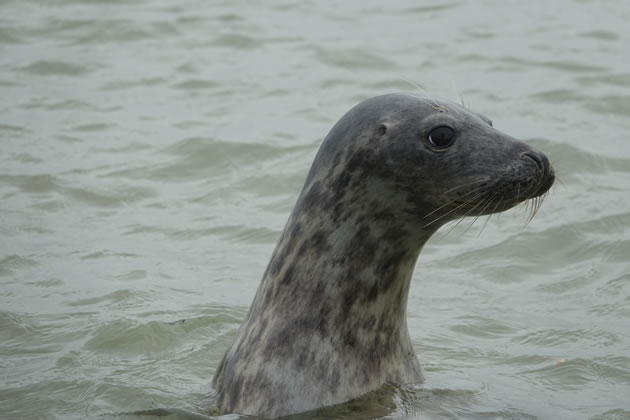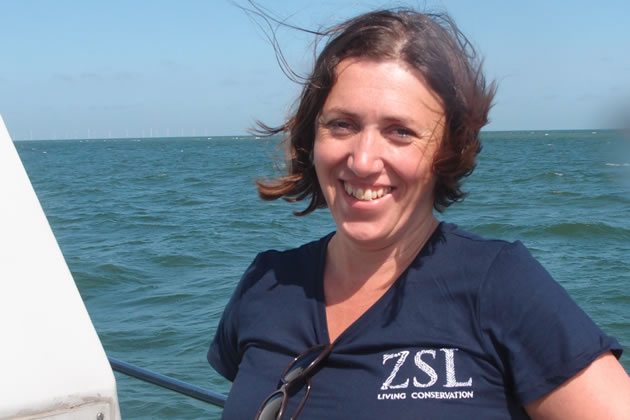Thames Seal Population Estimated at Over Four Thousand
A fifth of sightings now in west London upstream from Putney Bridge

Sightings now much more common in west London. Picture: ZSL
Spotting a seal in the River Thames in London always causes a bit of a stir.
People start getting their phones out and taking pictures and videos of the cute creatures as they flap about on the foreshore appearing to love the attention.
But recently their appearances seem to have become more common, even in West London in places such as Barnes and Teddington.
So are we really seeing more seals in London now, and why is it happening?
We spoke to Alison Debney, ZSL’s Estuaries and Wetlands Programme Manager, to find out more.
Since the early 2000s ZSL has been monitoring marine mammals in the Thames Estuary to gain a better understanding and help conserve them.
“Every so often you’d get a newspaper report saying that a seal had been sighted, but actually nobody knew how many came in, how they use the Estuary and what sort of populations were for marine mammals such as harbour seals and grey seals” said Alison.
They soon set up a seals sightings app to encourage Londoners to report their findings, and have been able to pull together some interesting data in recent years alongside population surveys calculated by aerial photographs taken out in the Outer Estuary.
Alison says that there really are more seals in the Thames nowadays.

Naturally inquisitve seals believed to be following fish upriver. Picture: ZSL
“Our population estimates at the moment are 900 harbour seals and then 3,200 grey seals for the Greater Thames Estuary,” she said.
“I’ve been noticing myself an increasing number of sightings or reports of seals in West London. Looking at our sighting database we are seeing an increasing number of seals being observed upstream of Putney Bridge.
“In 2016 we had 18 sightings upstream of Putney out of 290, so six per cent of our sightings were upstream of Putney.
“But this year we had 130 sightings upstream of Putney Bridge which is 22 per cent of our total sightings.”
The team at ZSL is still trying to work out the exact reason behind this.
“You tend to see the sprats and herring coming in the estuary and so the seals sometimes follow those in,” said Alison.
She said seals often “seem inquisitive” and are happy to follow fish up the river.

Alison Debney. Picture: ZSL
Recently there have also been more grey seals west of Putney, when it used to only be harbour seals.
Harbour seals have relatively small flippers compared to body size, a stout nose and a pronounced dip in the forehead.
They have V-shaped nostrils and are characterised by their puppy dog face.
Grey seals are larger, growing to up to 2.1m long with males reaching a whopping 300kg.
They have large flippers relative to both their own body size and to those of the harbour seal, and have longer, flatter head profiles with eyes located on the sides of the face and have parallel nostrils as opposed to v-shaped ones.
Alison says that researchers are still trying to figure out the relationship between harbour seals and grey seals.
“Originally we were wondering whether that was linked to grey seals increasing and so pushing the harbour seals further south and into our waters, but as we are seeing grey seal populations increasing we want to understand what the dynamic is between them, whether there’s competition for prey or aggressive behaviour from the greys to the common/harbour.”
She says she still thinks seeing a seal in London is “a bit unusual” and hasn’t seen one further inland than Greenwich herself.
“So if I saw it, I’d be thrilled, absolutely thrilled. I think it is an event.
“I think it’s a treat for us to be able to see nature. It’s probably not ground breaking that they’re there, but I think it’s a thrill in central London that we’ve got nature.
“The Thames is a thriving environment. We’re doing our best to make it better and better and better through improved management and infrastructure. But look at this year and look at the seals, there’s fish for them to eat, there’s places for them, so they are happy.
“It’s a really positive and optimistic message. So I think people are right to feel thrilled and pleased and honoured to see them. I think we should celebrate it.”
You can report sightings of seals in the Thames here.
ZSL is a charity and is unable to raise funds through its usual zoo ticket sales at the moment. If you would like to help them carry on with their conservation work, you can donate here.
Sian Bayley - Local Democracy Reporter
March 12, 2021